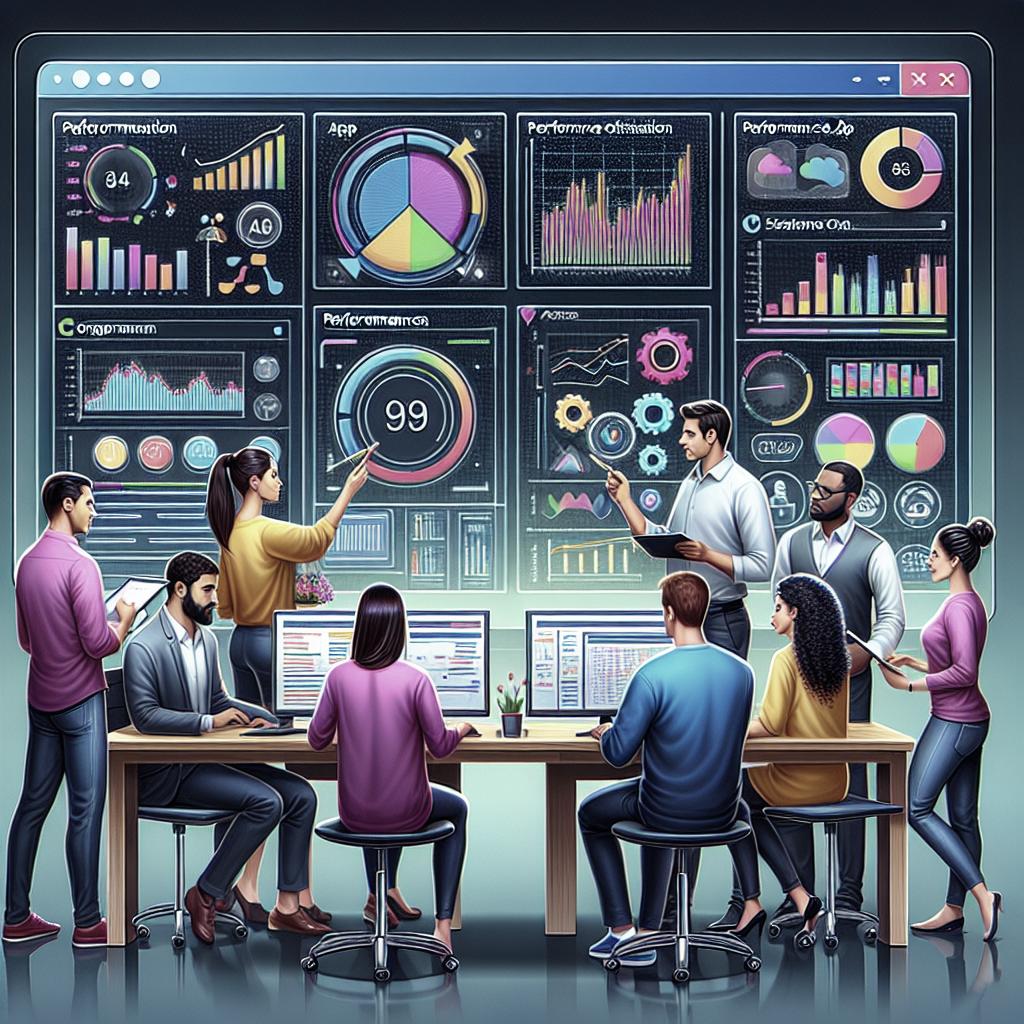Best Practices for Mobile App Maintenance
In today’s fast-paced digital world, mobile apps require regular attention and consistent updates to remain functional and competitive. This detailed guide explores best practices for mobile app maintenance, ensuring your app thrives in a constantly evolving tech landscape. We’ll delve into the different facets of app maintenance, from enhancing compatibility and security to incorporating user feedback and assessing costs. Our focus will be on proactive and reactive approaches that help you balance quality and expenses effectively. Whether you’re a developer, app owner, or part of a tech-savvy audience, these insights will help you understand and implement a robust maintenance strategy.
Key Takeaways
- Understanding the comprehensive scope and lifecycle of mobile app maintenance is crucial for long-term success.
- Prioritizing security and compatibility ensures optimal performance across various devices and operating systems.
- Cost analysis and balancing quality with expenses lead to strategic, efficient resource allocation.
- Proactive measures and emergency protocols maintain app reliability and user satisfaction.
- Regular updates, user engagement, and a collaborative development team are essential for sustained growth and improvement.
Unveiling Mobile Application Maintenance
Understanding the Scope
Mobile app maintenance encompasses a variety of activities designed to keep your application functioning smoothly after its initial launch. This may include bug fixing, performance enhancements, and accommodating updates in operating systems or devices. Essentially, it ensures that your app remains relevant and error-free throughout its lifetime. The ongoing process requires collaboration among developers, designers, marketers, and users to deliver problem-free performance and a seamless user experience.
Understanding the extent of maintenance needed involves analyzing user needs, technological advancements, competitive moves in the market, and feedback from multiple stakeholders. By recognizing these key areas and strategically allocating resources to address them, app owners can better manage expectations and maintain quality. This approach also helps in streamlining processes, setting realistic deadlines for updates and improvements, and ultimately achieving business objectives.
The Lifecycle Connection
App maintenance is intrinsically linked to the mobile app’s lifecycle stages, from development and launch to maturation and potential retirement. Each stage requires unique maintenance considerations. Initially, post-launch, the emphasis is on quickly resolving any unexpected issues that may have slipped through initial testing phases. As the app matures, the focus shifts towards adding enhancements, improving performance based on real-world usage, and adapting to evolving user expectations.
Understanding the app lifecycle provides valuable context for planning maintenance activities. The more you can anticipate user needs and technological changes as your app evolves, the more effectively you can address potential problems before they impact the user. Aligning maintenance efforts with lifecycle stages ensures a proactive approach that promotes long-term success and sustainability.
The Pillars of App Maintenance
Ensuring Compatibility Across Devices and OS
With the multitude of devices and operating systems available, ensuring compatibility is a crucial aspect of app maintenance. New device models and OS updates can introduce compatibility issues that affect app performance or user accessibility. Therefore, it’s essential to regularly test the app on different devices and operating systems and make necessary adjustments. Compatibility issues, when identified early, can be rectified through timely updates, ensuring a seamless experience for users across all platforms.
Cross-device and cross-platform compatibility not only enhance user experience but also extend the reach of your application. Investing in ongoing testing and updates helps prevent potential incompatibility issues, which could otherwise lead to user dissatisfaction and decreased app usage. A well-maintained app that functions reliably regardless of the user’s device is crucial in building trust and user loyalty.
Security as a Priority
Security is a non-negotiable aspect of mobile app maintenance, given the increasing threats and vulnerability to cyber-attacks. Regular security audits and updates are necessary to close security loopholes and protect user data from breaches. By evaluating the app’s security structure, developers can identify vulnerabilities and enforce robust security measures that protect against malicious attacks and unauthorized access.
Keeping up with the latest security threats and preventative measures helps ensure that your app remains trustworthy to users. Continuous updates to security protocols also build credibility and reduce risks associated with data breaches. By prioritizing security, app owners protect their reputation and foster a secure environment that users can trust.
Performance Tuning
Performance tuning is a critical element of mobile app maintenance, aiming to optimize speed and efficiency while minimizing downtime or user frustration. Regularly analyzing the app’s performance metrics like loading times, crash rates, and usage patterns helps identify areas where improvements are needed. Performance tuning involves refining the code, reducing bloatware, and utilizing caching strategies to deliver a fast and responsive experience.
An app with superior performance not only retains users but also attracts new downloads through positive reviews and word-of-mouth. Users demand seamless performance, and performance tuning is a proactive way to deliver. These optimizations can lead to increased user retention, higher engagement rates, and ultimately, a more successful app.
Cost Analysis of Mobile App Maintenance
Direct and Indirect Costs
Understanding the financial implications of mobile app maintenance is crucial for effective resource allocation. Direct costs involve expenses directly tied to maintenance activities, such as developer salaries, third-party tools, and infrastructure hosting costs. Indirect costs could include potential revenue lost due to downtime, reputational damage, or poor user experiences caused by maintenance issues.
By analyzing both direct and indirect costs associated with maintenance activities, app owners can create realistic budgets and effectively allocate resources to critical maintenance areas. This strategic planning leads to optimized expenditure without compromising app quality or user satisfaction. Budget transparency and an efficient financial strategy ensure sustainable, long-term app maintenance.
Balancing Quality and Expense
Budgetary constraints require a nuanced approach to balancing maintenance quality with expense. Prioritization of tasks based on urgency and impact is necessary to ensure funds are efficiently used. This process requires a thorough understanding of user needs, app usage data, and current market trends to determine areas where investments will offer maximum returns.
Economical yet effective solutions include leveraging automation and outsourcing where appropriate. By investing in preventive measures and targeted improvements, app owners can maximize their maintenance efforts without overspending. Ultimately, a well-thought-out balance between cost and quality guarantees a seamless user experience and ongoing app evolution.
Innovating with Maintenance: Adding Value to Your App
Staying Ahead with New Features
Incorporating new features is an innovative application of maintenance efforts that not only extends the life of your app but also keeps it competitive in a crowded market. By continuously evaluating emerging trends and user demands, developers can add features that enhance functionality and engage users. Innovations ensure that users have compelling reasons to continue using and recommending the app.
The key is careful analysis and implementation of features that align with user preferences and technological advancements. Staying ahead in terms of functionality and user value creates a sense of novelty and excitement, boosting user engagement and retention. A steady stream of innovative features as part of maintenance strategy adds distinct value to your app, offering a significant edge over competitors.
User Feedback: The Roadmap for Improvement
User feedback serves as a valuable tool for guiding maintenance and development efforts. By listening to user suggestions and addressing grievances, app owners can make informed decisions on necessary updates and enhancements. Feedback loops, including surveys, reviews, and ratings, help identify user issues and expectations effectively.
Responding to feedback not only fosters a positive relationship with users but also provides tangible insights into areas that require immediate attention. It is vital to prioritize feedback-driven improvements, as they ensure the app continually meets user needs while tackling issues that might drive users away. The result is an app that evolves according to users’ evolving preferences.
Proactive Measures for Preventative Maintenance
Regular Audits and Code Reviews
Regular audits and code reviews are essential preventive measures that ensure your app remains efficient and bug-free over its lifecycle. These evaluations help identify potential issues before they escalate, allowing developers to rectify them early. Code reviews also enhance the overall quality of the codebase by pinpointing inefficiencies or outdated practices.
By instituting routine audits and reviews, app developers can stay ahead of problems, ensuring fewer disruptions and maintaining optimal performance. These proactive practices contribute to a stable and reliable application, which translates into improved user satisfaction and confidence in the app’s functionality.
Automated Testing for Reliable Performance
Automated testing plays a crucial role in maintaining app performance by quickly detecting bugs and regressions that might arise from new code changes. Automated tests can cover many different test cases more efficiently than manual testing, ensuring the app remains robust and responsive post any updates or modifications.
Continuous integration and continuous deployment (CI/CD) pipelines can further enhance automated testing by facilitating rapid testing and integration of new features, minimizing downtime, and ensuring consistent quality delivery. Automated testing ultimately reduces the likelihood of user-facing issues, contributing to user satisfaction and trust.
Emergency Response: Handling Urgent Issues with Agility
Setting Up an Emergency Protocol
Establishing a well-defined emergency protocol is critical for efficiently managing urgent issues. These protocols should include clear instructions for identifying and prioritizing problems, along with predefined roles and responsibilities for team members to ensure rapid response. Effective communication channels and escalation procedures are also necessary for swift resolution.
A structured approach ensures minimal disruption to users and maintains app reliability. Addressing issues promptly reduces the risk of escalated problems that might damage the app’s reputation and user trust. Hence, having a robust emergency protocol as part of the maintenance strategy is invaluable.
Building a Dedicated Response Team
An agile response team with the expertise to tackle urgent issues is vital for maintaining app functionality during critical incidents. This team should be adept in trouble-shooting and resolving key issues while minimizing user impact. Recruiting and retaining skilled professionals for this role is pivotal to safeguarding app performance.
A dedicated response team ensures immediate attention is given to critical issues, maintaining the app’s integrity and user trust. This proactive measure is essential to handling emergencies with speed and precision, reinforcing a reliable user experience even in challenging scenarios.
Engaging Users Through Regular App Updates
Marketing Your Updates
Effectively communicating app updates to users is crucial for encouraging adoption and engagement. Leveraging various marketing channels, such as social media, email newsletters, and in-app notifications, helps alert users about new features, improvements, and fixes. Clear communication ensures users are informed and excited about updates rather than viewing them as mere interruptions.
Marketing initiatives should highlight the benefits of updates, increasing user awareness and encouraging immediate engagement with enhanced functionalities. By positively representing updates, app owners can foster user anticipation and continued interest in the application’s evolution.
Tracking Key Metrics Post-Update
Monitoring key performance indicators (KPIs) following any update is essential to evaluating the update’s success. Track metrics such as user engagement, usage frequency, app ratings, and crash reports to assess how users respond to changes. This analysis provides critical feedback for optimizing future updates.
By consistently tracking post-update metrics, app owners can gain insights into user preferences and areas for improvement. Strategic data-driven actions enhance future updates, ultimately creating a more user-centric app experience and ensuring ongoing growth and relevance.
The Role of a Development Team in App Maintenance
Integrating Quality Assurance in the Workflow
Quality assurance is a fundamental aspect of app maintenance, ensuring that your application functions optimally without bugs or errors. Integrating QA processes throughout the development lifecycle allows for continuous monitoring and testing, preventing defects from reaching production. A robust QA strategy increases overall efficiency and effectiveness by identifying and addressing issues early.
Collaboration between QA and development teams enables a shared understanding of objectives and priorities, leading to improved outcomes for maintenance efforts. This ensures that quality remains consistent, and apps function as intended, delivering high user satisfaction and loyalty.
Collaborative Efforts for Comprehensive Care
Successful mobile app maintenance depends on collaboration between developers, designers, testers, and other stakeholders. Each team brings valuable perspectives and expertise, ensuring comprehensive care for the app across various aspects, from user interface to functionality. Effective communication and teamwork enable quicker problem-solving and innovative solutions.
By fostering a culture of collaboration and open dialogue, app owners create a more integrated development environment. This ensures a seamless alignment of goals with strategic maintenance activities, promoting long-term success and stability in app performance.
Summary
| Section | Topics Covered |
|---|---|
| Unveiling Mobile Application Maintenance | Scope, Lifecycle Connection |
| The Pillars of App Maintenance | Compatibility, Security, Performance |
| Cost Analysis of Mobile App Maintenance | Direct and Indirect Costs, Balancing Quality |
| Innovating with Maintenance | New Features, User Feedback |
| Proactive Measures for Preventative Maintenance | Audits, Code Reviews, Automated Testing |
| Emergency Response | Protocols, Response Team |
| Engaging Users Through Regular App Updates | Marketing, Tracking Metrics |
| The Role of a Development Team | Quality Assurance, Collaborative Efforts |
Frequently Asked Questions
What is included in mobile app maintenance?
Mobile app maintenance includes activities such as bug fixing, performance enhancement, security updates, compatibility checks with OS and devices, adding new features based on user feedback, and responding to urgent issues efficiently.
Why is regular app maintenance important?
Regular app maintenance is essential for maintaining user satisfaction, ensuring optimal performance, protecting user data with robust security measures, and staying relevant in the ever-evolving technological landscape.
How much does app maintenance typically cost?
App maintenance costs vary depending on factors such as the app’s complexity, the frequency of updates, the number of platforms it supports, and the chosen maintenance strategy. Costs include direct expenses for resources and indirect costs related to downtime or user dissatisfaction.
How do app updates affect user retention?
App updates can positively affect user retention by enhancing functionality, fixing bugs, and incorporating requested features. When communicated effectively, updates build user trust and interest, encouraging continued usage and engagement.
What is the role of a development team in app maintenance?
The development team plays a crucial role in integrating quality assurance processes, collaborating with various stakeholders, conducting performance tuning, and ensuring comprehensive care for the app. Their expertise is vital for maintaining the app throughout its lifecycle.


